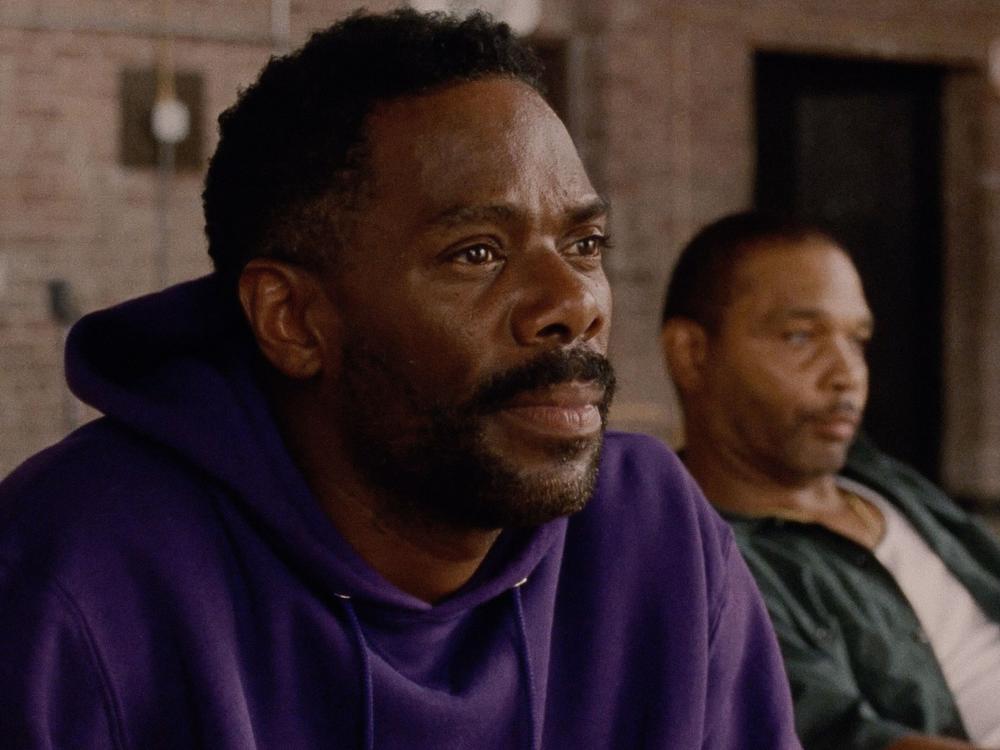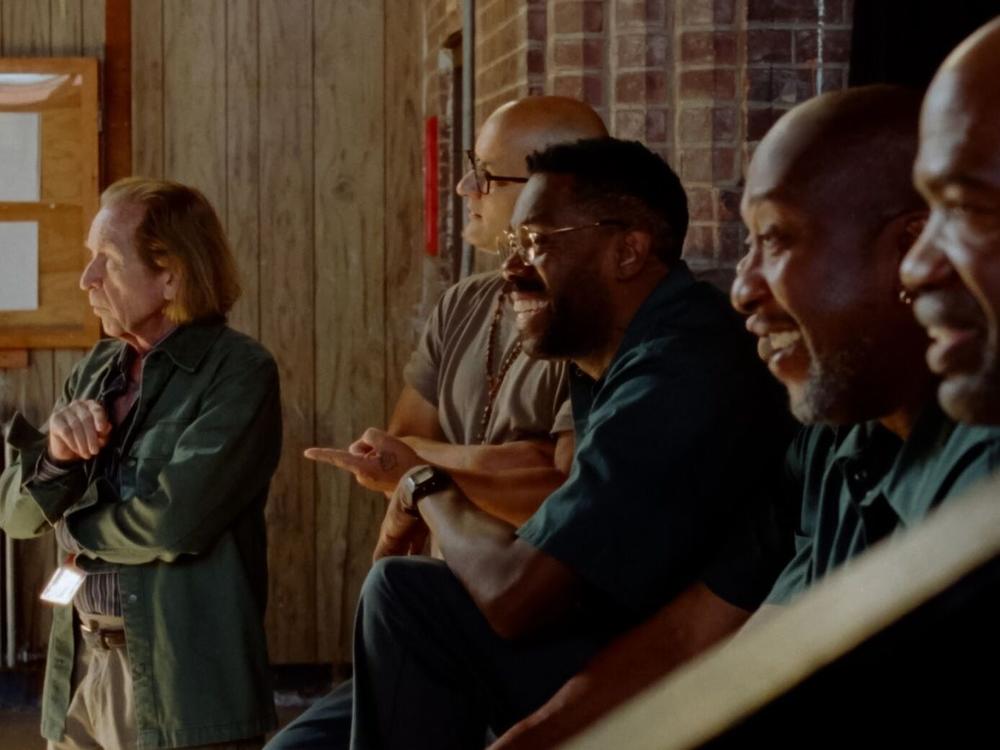Section Branding
Header Content
‘Sing Sing’ tenderly probes the joys – and limits – of art in prison
Primary Content
It’s crucial, and foreboding, that Sing Sing begins on a stage during a stirring performance of A Midsummer Night’s Dream. John “Divine G” Whitfield (Colman Domingo) recites the play’s final lines to rapturous applause, in a production that’s been fully realized with lighting, costumes, and props. The cast is a group of lively and committed actors who also happen to be incarcerated at the notorious New York maximum-security prison. It quickly becomes clear this isn’t a dream or a flashback, it’s sometime in the 2000s – and Sing Sing’s Rehabilitation Through the Arts (RTA) program has already bore nurturing fruit for its participants for some time now. Before we see anything else, Divine G and his other incarcerated castmates are introduced as creative spirits.
The easy way to tell a story of finding hope in even the bleakest of circumstances has been done many times over: Milk the despair; swoop in with a savior; heal the wayward souls through the power of arts, sports, etc. These narratives may mean well, but such a neatly curated dramatic arc is typically reductive and pathologizing of the very people it purports to humanize.
Director Greg Kwedar’s Sing Sing is, mercifully and beautifully, different. Co-written with Clint Bentley but very much a collaborative effort with input from participants and alumni of the prison’s RTA program, the poignant drama avoids the well-trodden path at nearly every turn. It doesn’t ignore the despair, but it doesn’t wallow in it, either. And it understands that joining a character in the middle of their journey can be an even more compelling and truthful artistic exercise than mining the agonizing details of their origin story.
On screen, under the energetic direction of RTA volunteer Brent Buell (Paul Raci), the crew is close-knit, a refuge from the harsher realities of life within Sing Sing’s walls. In fact, the program has been so well-received that there’s a waiting list of would-be thespians eager to join the ensemble for its next production. Playwright and novelist Divine G, the group’s de facto heart and soul, decides to recruit Clarence “Divine Eye” Maclin, another incarcerated person he’s been observing around the block. Divine Eye is a tough and prickly loner who’s dealing drugs within the jail, but he’s also really into Shakespeare, and is receptive to – if a little wary of – getting in on the program. (The formerly incarcerated Maclin, an absorbing presence, plays a version of himself here, as do several other colorful Sing Sing performers. The real-life inspiration for Domingo’s character has a small cameo early in the film.)
By its own design, Sing Sing presents multiple complex thematic threads and then unspools them with specificity and tenderness. A lighthearted “let’s put on a show” attitude courses throughout, as the cast rehearses an original comedic play, Breakin’ the Mummy’s Code, sprung from their own vivid imaginations. (It’s a wacky time-traveling epic starring a hodge-podge of pop culture figures, including Captain Hook, Hamlet, and … Freddy Krueger.) Divine Eye’s arrival shakes up the group’s dynamic a bit, and a fascinating dilemma arises when Divine G, like any diligent artist who’s protective of their craft, finds himself having to check his ego for the good of the group.
Of course, minor frustrations behind the collaborative art process are complicated by unusually high stakes. RTA operates as a lifeline for these men – a way, as one of them puts it, for them to “become human again” within the confines of a place deliberately structured to strip them of their humanity. The film takes time to clearly communicate this often; it’s especially effectively rendered during an exercise where volunteer director Brent prompts each performer to imagine a favorite memory or place, and then describe it aloud.
But Kwedar and Bentley are careful to not give in to mawkish trappings, and just when it seems as though the movie might be veering close to “O Captain, my Captain!” territory, it reins itself back in. It helps that Sing Sing is unafraid to acknowledge art’s limitations as a vessel for those who are incarcerated, even as it celebrates the joys art can produce – not everyone in the group is able to access their happy place during that exercise. It’s also buoyed by the collective strength of the performances which make each character, even those we learn just a few details about, distinctive and memorable. Domingo and Maclin in particular share a special kinetic energy that oscillates as any friendship can over time.
For decades a movement opposed to the country’s mass incarceration epidemic has been gaining momentum, and Sing Sing comes at an interesting time. In 2024, two of the summer’s biggest movies – Bad Boys: Ride or Die and Beverly Hills Cop: Axel F – continue the grand Hollywood tradition of dramatizing the pursuit and capture of “bad guys” by law enforcement. Dick Wolf’s Law & Order franchise is still going strong, too. Kwedar’s film, on the other hand, isn’t especially interested in designating “bad” or “good” guys, and the offenses the characters have been accused and convicted of aren’t all that important to the story. The main exception is Divine G, seeking clemency for a wrongful murder conviction based on evidence that clearly exonerates him – and perhaps some audiences will find this to be a little too convenient as a narrative conceit.
But Divine G’s story is true-to-life. And to borrow from a different play entirely: It’s all-too easy to be hard. Sing Sing, and its characters, gamely seek out the more challenging work of excavating authentic compassion and empathy for those who rarely receive it.


